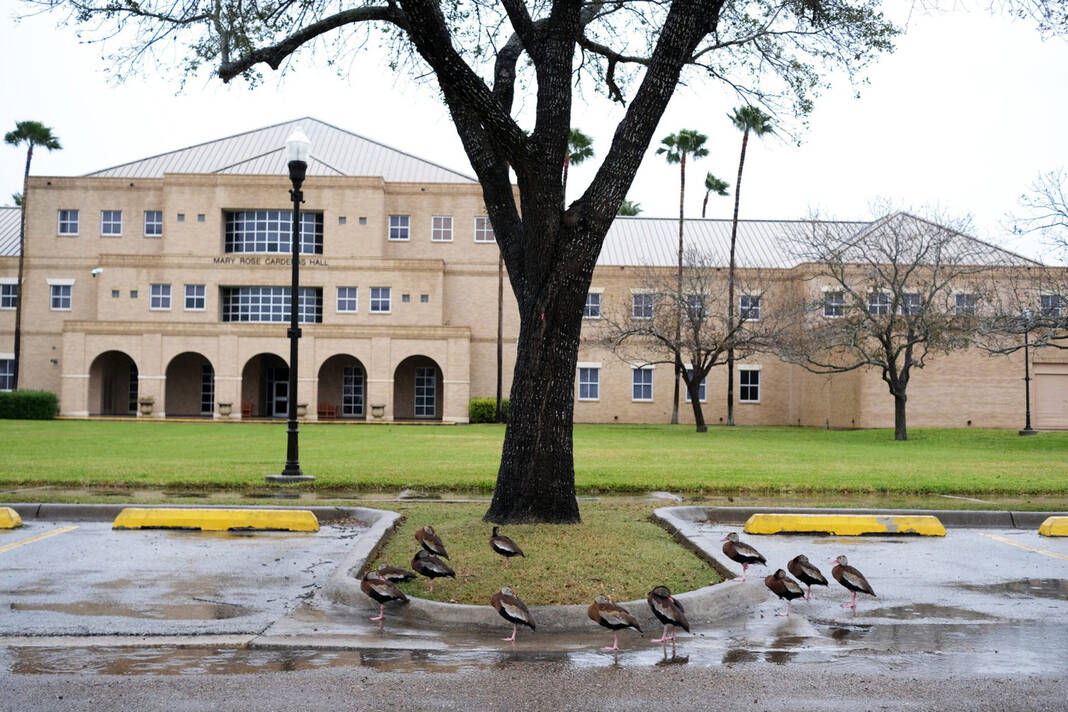|
Only have a minute? Listen instead
Getting your Trinity Audio player ready...
|

The Rio Grande Valley is finally about to turn a corner on this ridiculous heat, which has plagued deep South Texas since June 9.
That’s according to Warning Coordination Meteorologist Barry Goldsmith with the National Weather Service Brownsville-RGV station, who reported in an update late Friday that the “La Canicula” weather pattern responsible for the nonstop summer swelter is exhibiting signs of change “at long last.”
As for rain, a distant memory for many Valley residents, an already strengthening El Nino expected to last through mid winter or early spring 2024 “offers hope for more clouds and rainfall as we move toward the end of the calendar year,” he said.
That in turn will keep temperatures in line, though they’ll still probably continue to be a little higher than average, but at least closer to long-term averages for the period, especially November and December, Goldsmith said.
“Such a forecast would gradually improve drought/dryness conditions and stop the continued reduction in soil moisture — all helpful items for the current agricultural and municipal water supply issues that have plagued the Valley from midsummer through today,” he said.
It may take a while to adjust to good on the weather front after all this time, though not to worry there’s “bad news” too, at least in the sense that forecasters have a very low degree of confidence in what exactly is going to happen with precipitation and temperatures.
The fronts will come, starting in October, but the question is whether they’ll be accompanied by “minimal rain followed by prolonged dry/lower humidity and warm weather,” Goldsmith said.
“Or will they move slow enough to allow tropical moisture from the southwest Gulf, western Caribbean and eastern tropical Pacific to give welcome and helpful rainfall to help fill up local detention ponds and drainage canals, and sufficiently reverse the near-record low levels at Falcon Reservoir at the end of September? These are the unknowns,” he said.
A key point for the last three months of 2023 is that, based on historical analogues with similar moderate to strong El Ninos developing in late autumn or early winter, chances are better for welcome rainfall through December, Goldsmith said. At the same time, there’s still a 30% chance, give or take, that the season could wind up being drier than average — though a 36% chance for wetter than average, he said.

At any rate, the atmospheric heat machine has another week in it before a front arrives to bring down temperatures notably, though it’ll still be warm during the day, Goldsmith said.
“Following the front, the searing summer heat will be over, replaced by more tolerable daytime temperatures — well below the century mark,” he said. “Current forecast for late next week, Oct. 4-6 or longer, is locking in on notable rainfall across the region. Heading into mid-October, temperatures should stay at or below average.”
That means afternoon averages in the upper 80s, and upper 60s when the sun comes up, and a “lean” toward additional rain, possibly via slow-moving fronts or a feed of eastern tropical Pacific moisture from the leftovers of tropical cyclones moving onshore along Mexico’s Pacific coast, Goldsmith said, noting that, again, late October through November are extremely uncertain.
The three main possibilities are, one, additional fronts could come through slowly, or even become stationary, which would produce more rain and clouds and average to slightly-below-average temperatures. Two, more fronts could come through fast and with limited rainfall, with one- or two-week periods of dry weather with near-average temperatures — mainly 80s during the day and upper 50s to lower 60s by sunrise.
Three, a “shadow” of La Canicula could remain across northern Mexico, pushing temperatures back into the upper 80s to lower 90s, with limited rainfall, Goldsmith said.
Meanwhile, it may be time to start thinking about digging out that cold weather apparel that’s been uselessly taking up closet space forever.
“A stronger front or two, a norther, is likely from Thanksgiving through New Year’s Eve, which could produce a day-to-day apparent temperature drop of 40 degrees or more and be followed by chilly light rain or drizzle,” Goldsmith said. “At this point, an Arctic-sourced front is not anticipated before the end of 2023.”




